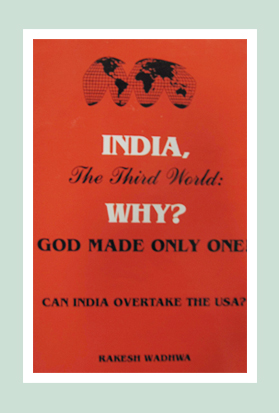The Hidden Cost of Government Subsidies

One of the tools that governments worldwide use to drive the economy is industrial policy. They attempt to promote competitiveness in key sectors through targeted interventions. There is a strong and renewed global trend of governments actively intervening in key industries like semiconductors and green energy to achieve strategic goals. This marks a significant shift from the free-market principles that dominated in recent decades, driven by geopolitical tensions and the urgency of the climate crisis.
Among the key interventions is direct financial aid, in the form of subsidies, to companies functioning in the sectors that the government wants to promote. Such policies have hidden costs for the economy – resource misallocation and reduced market competition.
Distorting the Market: The Resource Trap
Resource misallocation means that key economic inputs are used inefficiently. Resources include things like labour, capital (money for investment), and land. In a free market, efficient and productive businesses earn higher profits. They can then afford to buy more resources to expand. This process moves resources from less productive firms to more productive ones.
Subsidies disrupt and distort this natural flow. A subsidy gives a company an artificial financial advantage. This money is often taken from taxpayers or borrowed by the government. The subsidised firm now has cheaper inputs or higher revenue. This happens even if the firm is not very efficient at its core business.
A less efficient but subsidised company can then outbid a more efficient, unsubsidised competitor for resources. The best workers or most valuable capital will go to the wrong company. It’s rewarding the less efficient. And this slows overall economic growth. It keeps resources locked in industries that do not create the most value.
Take the solar panel industry, for instance. Government support in many countries has fuelled a massive and rapid expansion of manufacturing capacity. This has encouraged firms to invest large amounts of capital and labour into building factories. Much of this investment, however, was not based on true market demand or long-term efficiency. Instead, it was driven by the availability of subsidies. This resulted in an inefficient allocation of capital, leading to a global glut of panels.
The Competition Killer
Subsidies create an uneven playing field in the market. A subsidised firm can sell its product for a lower price. It does not need to innovate or cut costs as much as its competitors. This is because the government is making up the difference in cost.
The result? Innovation takes a back seat. The subsidised firm loses the motive to be better. It becomes dependent on government help to survive. Plus, subsidies create barriers to entry. New, innovative companies cannot compete with the subsidised prices. This prevents new, fresh competition from entering the market.
The Zombie Fest
Subsidies can keep weak, inefficient companies alive. These are often called “zombie” firms. Without government help, these firms would fail, freeing up their resources. Subsidies prevent this healthy process of creative destruction. They allow less efficient firms to survive, which weakens the entire industry.
Let’s go back to the example of subsidies on solar panel manufacturing. The subsidized firms can sell their panels at extremely low, often loss-making, prices internationally. This practice is sometimes called “dumping.” It makes it nearly impossible for unsubsidized manufacturers in other countries to compete. Consequently, many innovative, but smaller, foreign solar firms are driven out of business. The market becomes dominated by a few players whose success is based on government backing, rather than superior efficiency or technology. This stifles global competition and innovation.
Market Self-Correction Denied
Government subsidies, while well-intended, have significant economic drawbacks. They prevent the natural, efficient allocation of resources. They also shield firms from the necessary pressure of competition. This ultimately makes the entire economy less dynamic, less innovative, and less productive. Policymakers must recognise this hidden cost. They must weigh the price of subsidies against the promise of growth.
 Rakesh Wadhwa. Ever since, I was a school boy, I knew India was on the wrong path. Socialism was just not what we needed to get ahead. Government controlled our travel; government controlled our ability to buy and sell; and government controlled our freedom to move our money. My life has focused on the inherent rights people have. When I was in college, I never understood, what the governments meant by their "socialistic attitude". If people are free to buy, sell and move their capital themselves without any restrictions by state, then the welfare of people is inevitable & hence the countries they live in will become wealthy. The government has no right whatsoever, to point a finger at me or my business. I am not a revolutionary. I just want to light up my cigarette and not get nagged about it. I believe in non-interfering attitude to attain more.
Rakesh Wadhwa. Ever since, I was a school boy, I knew India was on the wrong path. Socialism was just not what we needed to get ahead. Government controlled our travel; government controlled our ability to buy and sell; and government controlled our freedom to move our money. My life has focused on the inherent rights people have. When I was in college, I never understood, what the governments meant by their "socialistic attitude". If people are free to buy, sell and move their capital themselves without any restrictions by state, then the welfare of people is inevitable & hence the countries they live in will become wealthy. The government has no right whatsoever, to point a finger at me or my business. I am not a revolutionary. I just want to light up my cigarette and not get nagged about it. I believe in non-interfering attitude to attain more. 
 The Bastiat Award is a journalism award, given annually by the International Policy Network, London. Bastiat Prize entries are judged on intellectual content, the persuasiveness of the language used and the type of publication in which they appear. Rakesh Wadhwa won the 3rd prize (a cash award of $1,000 and a candlestick), in 2006.
The Bastiat Award is a journalism award, given annually by the International Policy Network, London. Bastiat Prize entries are judged on intellectual content, the persuasiveness of the language used and the type of publication in which they appear. Rakesh Wadhwa won the 3rd prize (a cash award of $1,000 and a candlestick), in 2006.
What the readers are saying…